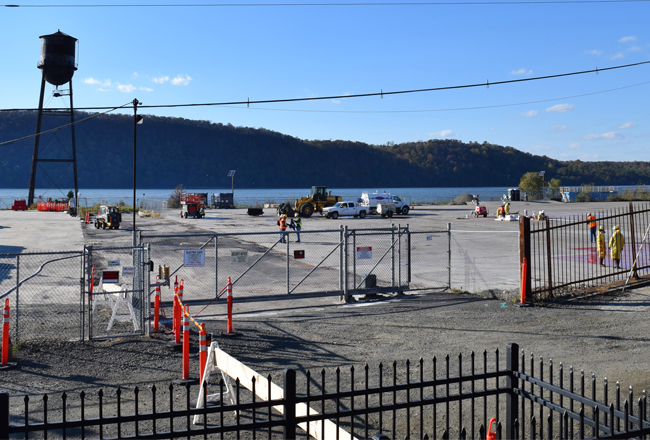Atlantic Richfield weighs handing off Hastings cleanup to developer

Though the cleanup of polluted industrial property on the Hastings-on-Hudson waterfront may have gotten underway this summer, the site”™s owner hasn”™t ruled out the possibility of bringing in an outside developer to complete the remediation.
Atlantic Richfield Co. continues to move forward with its design plans for the cleanup of the 28-acre waterfront property that will be submitted to and reviewed by the state Department of Environmental Conservation, according to the company.
“This is an environmentally complex remediation that will take several years to implement,” Atlantic Richfield, a BP PLC subsidiary, said in a statement. “Because there are construction efficiencies in the coordination of remediation and redevelopment and (Atlantic Richfield”™s) expertise is not in redevelopment, we continue to explore whether remediation and redevelopment work can be performed together and whether qualified developers may be interested in conducting both as a package.”
The oil company is consulting with a “short list of developers” that may complete the remediation and redevelop the property, though the company added that the “feasibility and timing of this approach is under review.”
“(Atlantic Richfield) recognizes that the highest and best use for the property is in redevelopment,” the company said in a statement. “We are striving for an outcome where the village collaborates in the planning process with a developer to achieve a balanced vision for the site.”
The company said this approach would provide the opportunity for a new developer “to incorporate certain redevelopment activities into the remediation process. It also could enable the village to expedite the redevelopment process, allowing the site to be put to productive use sooner.”
Hastings-on-Hudson Mayor Peter Swiderski said Atlantic Richfield is well within its right to seek an outside developer to facilitate the remediation, adding that “it does not mean they are offloading their liability for the cleanup of the site.”
“This property is owned by (Atlantic Richfield) and ultimately these decisions are theirs to make,” he said.
Earlier this year, demolition work began on Building 52, a red-brick industrial building on the Hastings waterfront dubbed the “literal birthplace” of toxic polychlorinated biphenyls.
Atlantic Richfield removed asbestos and other materials from the building interior prior to beginning demolition of the structure in August, when construction crews used excavators and other heavy machinery to bring down the century-old building piece by piece.
In 2014, Atlantic Richfield signed an order with the state Department of Environmental Conservation (DEC) in which it agreed to fund the more than $250 million estimated cost of removing the contaminated soil and sediment from the property, designated a federal Superfund brownfield site.
The demolition of Building 52 came more than a year after the village signed a consent decree that sparked the cleanup. The July 2016 decree is an update to a 2003 version that settled a lawsuit between Atlantic Richfield, the village and environmental group Riverkeeper and forced Atlantic Richfield to clean the site. Since then factors, including potential storm risks, rising sea levels and a new set of directives issued by DEC required changes to the agreement.
The village also plans to rezone the waterfront parcel from marine industrial use in the coming year. That process will likely begin this winter, according to Swiderski, and proceed for 18 to 24 months.
The mayor said the village plans to engage John Nolon, attorney, law professor and founder of the Pace University Land Use Law Center, to assist in that process.